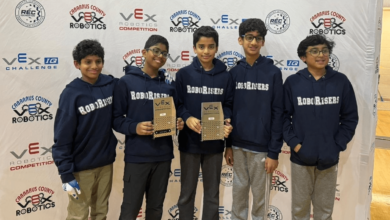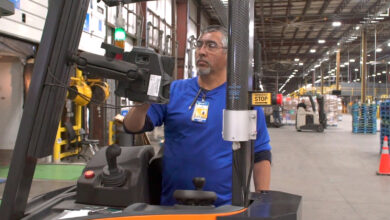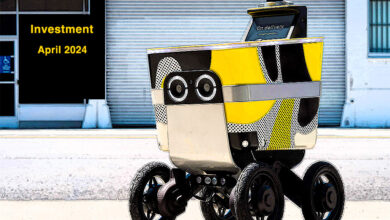This robot will clean your home and do your laundry

Several companies
are now working on creating human-like robots that will enter the workplace.
One of these
companies is Norwegian 1X.
It was founded as
Halodi Robotics in 2014 by Bernt Øivind Børnich.
The company aim to build humanoid robots that can work side by side with humans to meet the
world’s labour demands.
1X is now making
two robots that resemble humans.
EVE and NEO
EVE is a robot that
has wheels and hands that can grip. It can open doors, operate elevators, and
move or lift things.
NEO looks even more
like a human and is under development. The goal is for people to be able to
talk to the robot and ask it to do things. The robot can walk, jog, and climb
stairs, according to 1X. NEO should be able to do tasks at home or handle work in
a factory.
1X plans to launch
NEO for home use next year, according to Bernt Øivind Børnich, CEO and founder
of the company.
Can log in and feed the cat
EVE is already at
work and has matured, says Børnich.
“It’s out with
several customers and performs tasks every day. It’s a commercialised product. Our
fleet size is getting quite large,” he says.
1X has produced 75
EVE robots, and half of them are used outside of the company by customers. Its
users include customers in the air, space, and logistics industries.
EVE is used in
three and a half ways, according to the 1X CEO.
The half range of
use is more like an experiment. Børnich naturally has an EVE robot at home and
has set it to do things around the house.
“But that’s not
really something we do with EVE, because it’s a bit too big and heavy,” he says.
NEO will be better
suited as a home helper.
The robots can also
be controlled via a VR headset.
“If I’m at my
cabin, I can log in and feed the cat or accept a package delivery at the door,”
he says.
Guards large buildings
EVE’s main area of
use is in security. The robot works as a security guard in large buildings. It
drives around on its own and checks to make sure everything is as it should be.
An operator monitors the EVE robots. If something needs to be resolved, the operator can control EVE
via a VR headset.
“Usually, these
situations are very simple. For example, a door alarm has gone off. The
operator takes over and sees, for instance, that someone has put a shoe in the
door. Then you can get EVE to bend down, remove the shoe, and close the door,”
Børnich says.
Other examples of
what EVE might need to tackle include closing windows that people have
forgotten to close or to turn off a coffee machine.
“Instead of making all these rounds, you can look at a fleet of robots that provide a very good
overview of the building. You can solve problems as they arise,” he says.
At the testing stage
EVE is the only
humanoid robot that Børnich knows of that is currently being purchased by
customers.
“We’re no longer
in the pilot stage,” he says.
Other humanoid
robots are often tested via the company’s research and development budget.
At this stage, EVE
is being perfected for merchandise and warehouse work.
“It’s going really well. We’re not far from commercial deliveries. But there’s still some way to go,” he says.
The competition is
fierce. People who do the same thing for eight hours every day are quick at
completing their tasks, Børnich says.
The last area of
use will be in production and car manufacturing. This is even more challenging because you cannot fail, Børnich notes. However, he believes the company can enter
this market in two to three years.

How can robots understand new tasks?
1X is working on
developing the artificial intelligence of the robots. EVE functions largely
autonomously, controlling itself. Humans can take over when necessary.
1X is working on
teaching EVE new things based on a few demonstrations of the task, as well as data previously collected and large models they have trained.
You can ask
generative artificial intelligence to draw an avocado chair, even if the model
has never seen it before.
“In robotics, we
haven’t yet been able to get robots to do tasks they have never seen before and
have never been trained for,” says Børnich.
“What’s very
exciting is that we see that we are getting this to work. That’s the next priority.”
Will be controlled in the beginning
1X plans to launch
NEO for home use as early as next year in the San Francisco area.
“At this beginning
stage, this product is quite limited. It will be aimed
at those who are very interested in technology and who find it acceptable that the product takes some time to mature,” says Børnich.
One advantage of
sending the robots out into the world early is that the experiences provide a
lot of data. This helps to make the robots more intelligent and better at solving
tasks over time.
In the first year, 1X
operators will control the robots.
“The aim is to move
towards autonomy as quickly as possible,” Børnich says.
Privacy concerns
are also something 1X is working on, he adds.
1X envisions NEO to
be able to do things like tidy up, washing, and laundry. It will also be able to
entertain and be someone to talk to. It can display body language.

Looking forward to seeing what people come up with
1X wants people to
be able to take part in training the robots themselves and collaborate with
others.
“You should have
something to look forward to every day when you come home, to see what others have
come up with. You can download others’ upgrades for lots of fun things
to do,” Børnich says.
Perhaps someone wants to teach NEO to dance or be a workout partner.
“I’m really looking
forward to seeing what people will come up with. Of course, there will be control from our side to ensure that what people teach them is sensible and safe,” he says.
1X is currently building a factory that will
produce NEO robots. They will produce more NEO robots than EVE robots.
“We’ll see a big increase
in production volumes,” says Børnich.
Collecting vast amounts of data
We have seen humanoid
robots do many different things for years without them appearing in people’s
living rooms. Is there anything different now?
Børnich believes
two things have changed.
“One is that I
believe we are now in a position to solve the AI problem,” he says.
“The models we use
in robotics are not that different from large language models or those used to
create videos, like Sora.”
They are trained on
huge amounts of text, images, and videos that already exist on the internet.
It is not as easy to get the same amount of data for robotics, as there is no existing data for physical task-solving. It must be gathered anew.
“That’s the current challenge,” Børnich.

Out and about
The company has several
strategies to address that problem. 1X plans to build many robots quickly and
collect data when the robots are physically out in environments, doing things
and collecting data from sensors. This is called embodied data.
The fact that the
robots will be used in different place – at home, in factories, or in warehouses – is an advantage, according to Børnich.
“There’s a limit
to how much you can learn from packing the same box of shoes every
day. Once you’ve done it 200 times, there’s not much more to learn. You have to
go out into different environments to learn more,” he says.
Others are focusing on using more videos, for example.
“I can’t prove
that you need a body and embodied data to solve general artificial
intelligence. But as an engineer, I can say that it’s cumbersome not to have
it,” he says.
“Contact forces,
for example, are not directly observable in a video. It’s a bit like trying to teach a language model colours without pictures. It works,
but you need a lot of examples in language to understand colours.”
Creating robots
that are so intelligent that they can work among us requires an
internet-scale amount of data, according to Børnich.
Technological advances
The second thing
that is different now is that it is possible to build robots that are safe and can be produced at a reasonable price, according to Børnich.
NEO is lightweight
and has a soft exterior. Motors pull strings, loosely inspired by muscles.
“This gives the robot dynamic movements, making it safe to have in the house and when
it bumps into things,” he says.
Over the years,
there has been a lot of research on making motors for robots and how to
transfer power, as well as developments in sensors.
“There’s also been significant progress in AI and simulations. We use this a lot when designing components,”
he says.
Børnich believes
that it won’t be that long before humanoid robots enter workplaces.
“It will happen.
First slowly, then faster than most people might think,” he says.
For people in the industry, it’s clear that the development is gradual, but for the rest of society, it could seem like it is
happening a little too quickly, like with ChatGPT, he thinks.
———
Translated by Nancy Bazilchuk
Read the Norwegian version of this article at forskning.no



